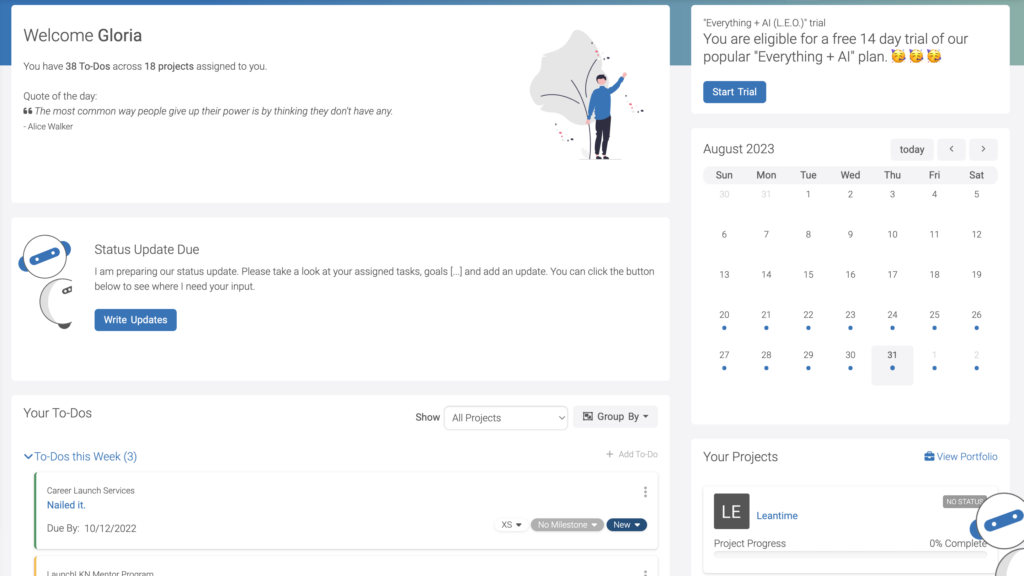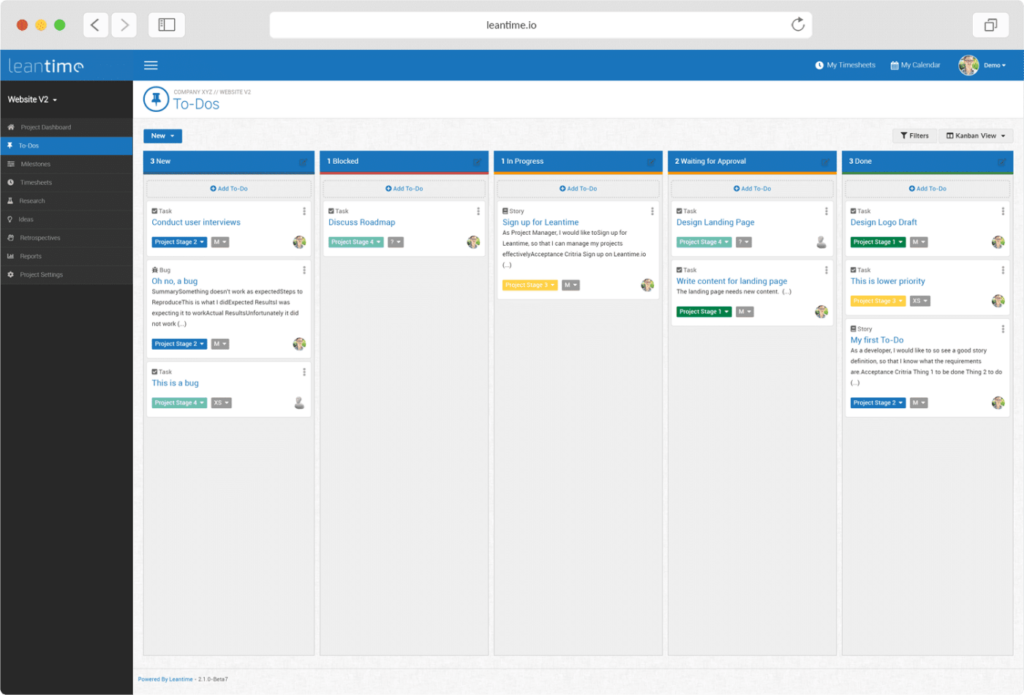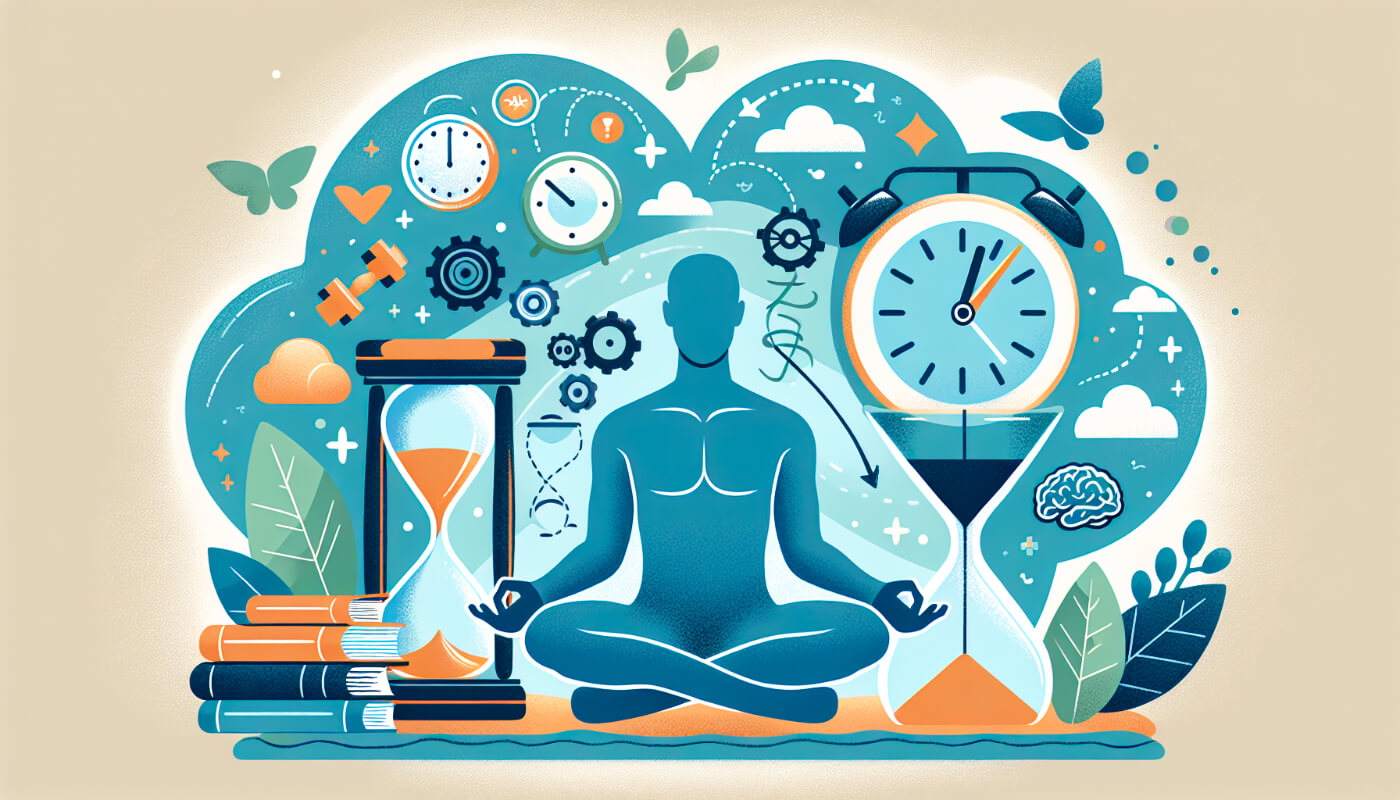Estimated reading time: 13 minutes
Focus and concentration are vital in both personal and professional life, enabling us to accomplish tasks efficiently and effectively. In today’s fast-paced world, staying focused on the task at hand can be daunting for some individuals.
With the rise of technology, we are constantly bombarded with endless notifications, emails, and social media updates, all of which can easily distract us and lose focus on our work. The ever-increasing workload and never-ending to-do lists can also contribute to a lack of concentration and focus.
Table of contents
- Factors Affecting Focus and Concentration
- Establishing a Routine
- Controlling Your Environment
- Simplify Your Workload to Stay Focused
- Pomodoro Technique
- Streamline Tasks with Automation
- Leantime Project Management Software
- Tracking Your Time to Be More Productive
- Organizational Tools and Strategies
- To-Do List That Works for Your Cognitive Abilities
- Minimize Distraction with Smart Notification Settings
- Nutrition and Eating Behaviors
- Practice Mindfulness
- Final Thought
If you’re struggling to stay focused, don’t worry – there are practical tips and techniques you can use to help you concentrate better than ever before. Discover how to focus better and explore top strategies for maintaining concentration.
However, by implementing effective strategies, you can improve your ability to concentrate, eliminate distractions, reduce stress, and boost your productivity
Factors Affecting Focus and Concentration
It’s important to understand the factors that can impact them to improve focus and concentration. Factors can be divided into internal and external categories.
Internal Factors
Focus and concentration can easily be interrupted by internal factors. Not getting enough sleep weakens the brain’s ability to filter distractions and maintain attention, similar to running a car on empty. Stress and anxiety act as vigilance agents that constantly scan for imagined threats, ignoring the task at hand.
Even basic physiological needs like hunger and dehydration play a crucial role. When the brain is deprived of its fuel source, glucose, performance drops, similar to an under-fueled engine sputtering and coughing. Pre-existing medical conditions such as ADHD and depression can also be significant roadblocks, hindering the smooth flow of attention.
External Factors
External factors play a pivotal role, often in ways we might not immediately recognize. Plus, the environment around us can be filled with distractions that pull our attention in various directions. For instance, noise from traffic or overheard conversations can abruptly interrupt our train of thought, forcing us to lose track of our current place and start over.
The internet, with its endless supply of information and entertainment, can be a significant source of distraction. Phone calls, text messages, and social media notifications can further disrupt one’s ability to concentrate on a single task.
Even the setup of our physical workspace, like an uncomfortable chair or poor lighting, can subtly erode our concentration over time. Each of these external factors can contribute to a fragmented attention span, making sustained focus a challenge and potentially affecting our productivity and the quality of our work. Recognizing and managing these interruptions is critical to creating an environment conducive to focus and deep concentration.

Establishing a Routine
Routines can provide structure and consistency, allowing individuals to manage their time better, prioritize tasks, and minimize distractions. A well-crafted routine can significantly impact one’s ability to concentrate on multiple tasks.
To create a routine that works best for your lifestyle, start by identifying your most productive hours of the day. These are the times when you feel most alert and focused. Whether it’s early morning or early afternoon, understanding these hours can improve concentration and work performance.
Establish a daily schedule, separating your day into blocks of time dedicated to different activities, such as work, exercise, meals, and relaxation. Include short breaks throughout the day to recharge and maintain your focus. Once you have established a routine, it is important to maintain consistency, as this will help solidify habits and reinforce your ability to concentrate.
Quick Tip: Planning ahead can help ease the anxiety of not knowing where to start.
Remember that each individual’s optimal routine may differ. Be flexible and willing to adjust your routine as needed, ensuring that it effectively supports your focus and concentration.
Controlling Your Environment
If you’re having trouble staying focused, the environment can play a significant role. Creating well-curated surroundings tailored to your specific needs and preferences can help you maintain attention on tasks and improve overall efficiency. Some factors to consider when creating an environment that promotes focus include noise levels, lighting, and stimulation.
Individual preferences for noise levels can vary. Some people may thrive in slightly noisy environments, finding that background sounds help them concentrate better. In contrast, others may require complete silence to maintain focus. Experiment with different noise levels to determine what works best for you. For instance, try using noise-canceling headphones or listening to natural sounds or classical music while working.
I prefer to listen to background music that I’m unfamiliar with and doesn’t have lyrics. I find myself trying to sing along or pay more attention to the lyrics than my task. Adequate lighting can prevent eyestrain and maintain alertness, while dim lighting can induce feelings of relaxation or sleepiness. Make sure that your workspace is well-lit, preferably with natural light, to create a workspace that promotes concentration.
Keep your workspace clutter-free and organized, removing unnecessary items that may divert your attention from your work. Additionally, consider closing any irrelevant browser tabs or applications on your computer to minimize digital distractions. By curating an environment that suits your preferences and minimizes distractions, you can significantly improve your focus and concentration, increasing efficiency and success in various aspects of life.
Simplify Your Workload to Stay Focused
You can adopt several approaches to enhance your focus, but one of the most effective methods is to simplify your workload. When you have a lot to complete, it’s easy to feel overwhelmed, which can negatively impact staying focused, causing unwanted stress and anxiety. However, if you break down complex tasks into smaller, more manageable chunks, you can tackle each subtask with greater focus, increasing productivity.
For example, divide it into smaller milestones if you have a large project to complete. You can focus on accomplishing one task at a time, reducing overwhelm and increasing your ability to concentrate on other tasks.
Incorporating a Kanban board can revolutionize your task prioritization. Visualize based on importance, urgency, or difficulty, and move them across the board as you progress. This visual aid helps keep critical tasks in the spotlight and motivates you to concentrate as you watch them move to completion.
Avoid multitasking or checking your phone or email every few minutes when working on an important task. Instead, set aside specific times during the day to check your email or messages and turn off notifications for non-essential apps. This way, you can minimize distractions and stay focused on your work.

Pomodoro Technique
This technique is a time management strategy that can significantly improve concentration. This method involves breaking work sessions into intervals, typically 25 minutes long, separated by a five-minute short break. The Pomodoro Technique helps improve overall efficiency and reduces mental fatigue by allowing the brain to focus intensely for short periods. It can help reduce losing focus while jumping from one task to another.
Streamline Tasks with Automation
In today’s fast-paced world, automation has become a game-changer for myself and others, enhancing productivity and achieve their goals more efficiently. One of the key advantages of automation is that it can help reduce mental clutter and enable you to concentrate on more important items. Automating repetitive and mundane assignments can free up mental energy and streamline your workflow.
Various task management tools and apps can help you automate routine processes and simplify your workday. For instance, if you find yourself spending a significant amount of time responding to emails, you could consider using email templates or setting up filters to sort and prioritize incoming messages automatically. This will save you time and help you focus on more critical tasks requiring creativity.
Utilizing automation tools and techniques, you can reduce distractions, enhance your concentration, and achieve your goals more efficiently and easily.
Leantime Project Management Software
Leantime.io can improve your focus and concentration by offering structured project management tools like Kanban boards and to-do lists. These features help organize them, set priorities, and visualize workflow, minimizing distractions and keeping you on track with clear objectives.

Streamline Your Daily Action Plan with Leantime
Leantime offers an overview of all your tasks across projects so you can for create a daily action plan. This view allows you to prioritize them, allocate time slots, and track progress, enabling you to stay focused on what matters most each day.
View all of Leantime’s features.
Stay Organized with Leantime’s Multiple To-Do Views
Leantime believes in emphasizing the views that speak to the different types of brains we have and so provides a Kanban view, List view, Table view, Calendar, and Timeline (milestone & Gantt chart style) overviews and is a fantastic tool for maintaining focus. By visualizing them in a way that works for you, you can schedule your day effectively, ensuring that your important tasks receive the attention they deserve.

Tracking Your Time to Be More Productive
Keeping track of how you allocate your time can be a valuable tool in improving your productivity. By tracking your activities, you can identify patterns and eliminate time-wasting activities, allowing you to allocate your time more efficiently. There are numerous time-tracking apps available that can help you stay on top of your schedule. These apps often allow you to track how much time you spend on a specific task, such as work-related activities or social media usage.
Did You Know: According to a study, Facebook costs employers billions of dollars annually as employees spend 32% of their workday on the platform. [1]
For instance, you might discover that you allocate significant time on social media or other non-work-related activities. This information can help set boundaries and allocate specific activity time blocks. The data can help you with your work without constant distractions.
Tracking your time and adjusting your schedule can increase your efficiency and achieve more in less time. Additionally, you can reduce your stress levels and improve your work-life balance by creating a more efficient and structured schedule. This isn’t just about noting what you do; it’s about understanding your actions’ frequency, duration, and context. For instance, you might find that your afternoons are often lost to unplanned meetings or that your mornings are less productive because of a habit of checking emails excessively.
Organizational Tools and Strategies
Organizational tools and strategies are crucial for efficiency by improving focus and eliminating distractions. Here are some of the best ways to improve your focus through organization:
Writing Down Tasks
Writing down tasks can be a highly effective strategy. This simple but powerful technique can help clear the mind and enable better focus on the task at hand. By creating a physical or digital list of tasks, individuals can better prioritize their work, track their progress, and maintain a clear sense of direction. This can ultimately lead to greater productivity and a more efficient use of time.
Using Planners or Organizational Tools
Incorporating planners or other tools, such as Leantime, can further enhance your focus and productivity. Leantime is a project management tool offering various features to simplify project management and align strategy with execution. By providing a clear and user-friendly platform for managing tasks, Leantime can help individuals better focus on their work and achieve more tremendous success in their personal and professional lives.

To-Do List That Works for Your Cognitive Abilities
Creating a detailed and realistic to-do list is an effective way to improve productivity while maintaining focus. Simply jotting down all the tasks you need to complete isn’t enough – you need to prioritize them and set deadlines. It will help you stay organized and motivated throughout the day. Consider using techniques like the Eisenhower Matrix to make your to-do list even more effective. This method helps you prioritize tasks based on their level of urgency and importance.
Breaking down your goals into smaller, actionable steps helps you stay focused and motivated as you work towards completing each task. The act of crossing out or checking off a task gives our brain the motivating dopamine release it craves. Thus, we need a way to mark progress on microtasks instead of keeping them in our head.
Minimize Distraction with Smart Notification Settings
Notifications are a constant distraction that can easily interrupt our workflow and impede our ability to concentrate on essential items. Notifications are meant to inform and connect but often cause stress, hindering creativity. Take control of your notification by customizing your settings. You can start by disabling unnecessary notifications from apps that don’t require immediate attention.
Did You Know: Employees are interrupted every three minutes and five seconds, according to a study by researchers at the University of California, Irvine. [2]
Consider implementing a “Do Not Disturb” mode on your devices during focused work sessions. This way, you can eliminate the temptation to check your phone or respond to non-urgent phone calls or text messages, allowing you to maintain a flow state and improve concentration afterward. It can be challenging at first, but taking charge of your notifications can regain control over your time, reduce stress, and improve your overall well-being.
Nutrition and Eating Behaviors
Proper nutrition plays a vital role in supporting focus and concentration, as the foods we consume can directly impact our brain’s function. Maintaining a balanced diet that includes energizing foods, minimizes sugar intake, and supports overall mental clarity.
Some examples of energizing foods that can boost focus include whole grains, legumes, nuts, seeds, lean meats, fish, and leafy greens. Incorporating these nutrient-dense foods into your meals can help promote optimal brain function and enhance focus.
Did You Know: Do you get easily distracted? A recent study has shown that consuming blueberries can help stay focused and enhance memory for up to five hours post-consumption. This is due to an enzyme that encourages oxygen and blood flow to the brain, thereby improving memory and sharpening our ability to focus and acquire new knowledge.

Practice Mindfulness
Mindfulness is gaining attention for its significant health benefits, understood through modern research despite its ancient roots. One study showed that when trained in mindfulness meditation, HR professionals improved their concentration and efficiency in multitasking simulations. [3]
This group could focus longer, switch tasks less, and work more effectively. Beyond meditation, simple practices like deep breathing exercises also contribute to mindfulness, helping individuals enhance their focus and mental clarity in everyday tasks.
Final Thought
Ultimately, by understanding the factors that impact focus and implementing effective strategies, you can boost and improve your concentration and achieve greater efficiency. Remember to simplify your workload, streamline action items with automation, track your time, craft a personalized to-do list, minimize interruptions, enhance information retrieval through note-taking, and centralize your work with a tool like Leantime.
We encourage you to implement these strategies and experience their benefits firsthand as they can to improve focus and concentration. By actively improving your focus and concentration, you can unlock your full potential and achieve better overall well-being, personally and professionally. Remember, the journey to improved focus is an ongoing process, and with consistent practice and dedication, you can attain remarkable results.



